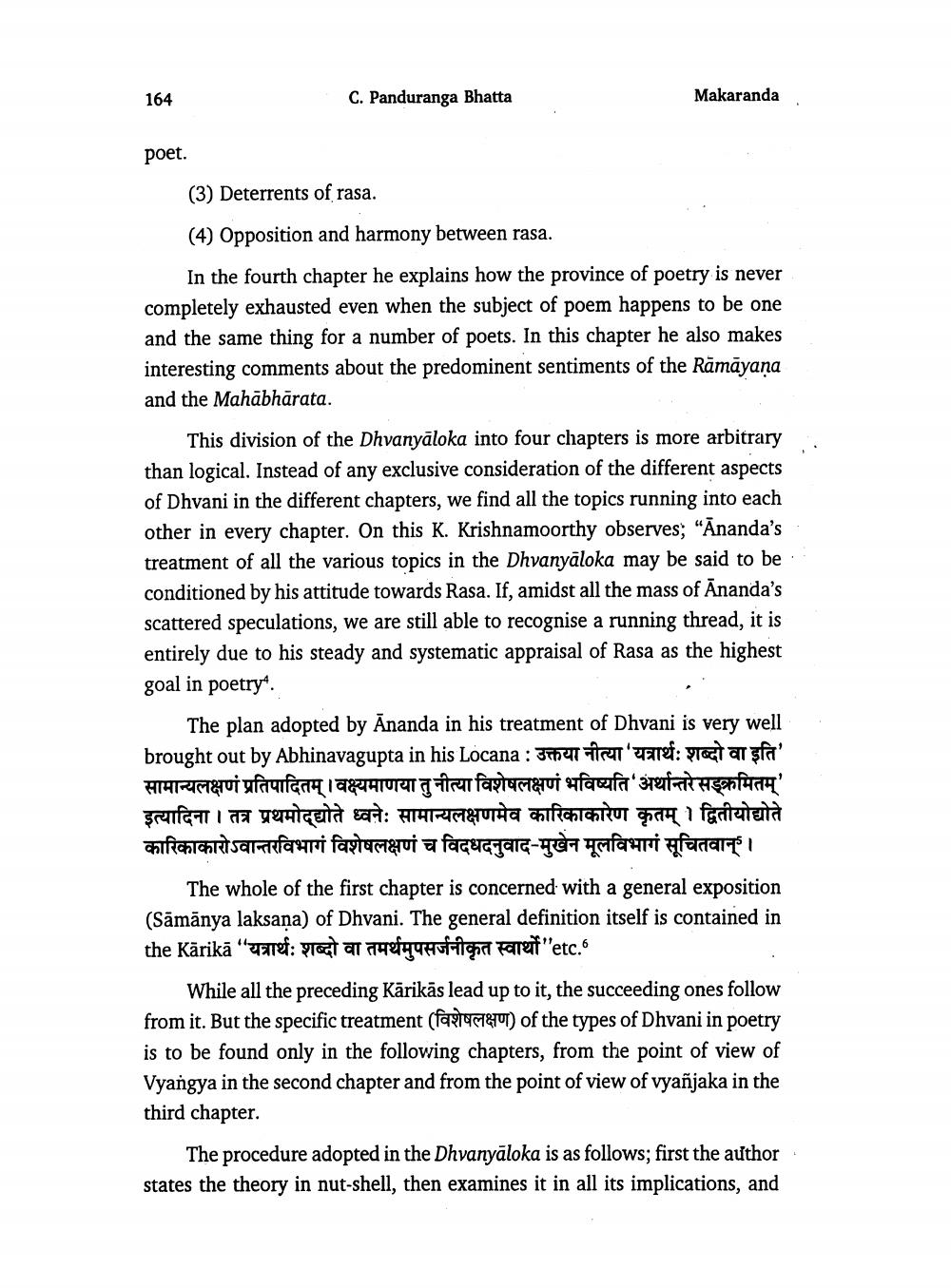________________
164
C. Panduranga Bhatta
Makaranda
poet.
(3) Deterrents of rasa.
(4) Opposition and harmony between rasa.
In the fourth chapter he explains how the province of poetry is never completely exhausted even when the subject of poem happens to be one and the same thing for a number of poets. In this chapter he also makes interesting comments about the predominent sentiments of the Rāmāyana and the Mahabharata.
This division of the Dhvanyaloka into four chapters is more arbitrary than logical. Instead of any exclusive consideration of the different aspects of Dhvani in the different chapters, we find all the topics running into each other in every chapter. On this K. Krishnamoorthy observes; "Ananda's treatment of all the various topics in the Dhvanyaloka may be said to be conditioned by his attitude towards Rasa. If, amidst all the mass of Ananda's scattered speculations, we are still able to recognise a running thread, it is entirely due to his steady and systematic appraisal of Rasa as the highest goal in poetry
The plan adopted by Ānanda in his treatment of Dhvani is very well brought out by Abhinavagupta in his Locana : per iratuaref: pret at sfa' सामान्यलक्षणं प्रतिपादितम् ।वक्ष्यमाणया तुनीत्या विशेषलक्षणं भविष्यति अर्थान्तरेसङ्क्रमितम्' इत्यादिना । तत्र प्रथमोद्योते ध्वनेः सामान्यलक्षणमेव कारिकाकारेण कृतम् । द्वितीयोद्योते कारिकाकारोऽवान्तरविभागं विशेषलक्षणं च विदधदनुवाद-मुखेन मूलविभागं सूचितवान् ।
The whole of the first chapter is concerned with a general exposition (Sämänya laksana) of Dhvani. The general definition itself is contained in the Kārikā "aref: prot at hefyuhstaliçant fanent "etc.
While all the preceding Kārikās lead up to it, the succeeding ones follow from it. But the specific treatment (fat96801) of the types of Dhvani in poetry is to be found only in the following chapters, from the point of view of Vyangya in the second chapter and from the point of view of vyañjaka in the third chapter.
The procedure adopted in the Dhvanyāloka is as follows; first the author states the theory in nut-shell, then examines it in all its implications, and




